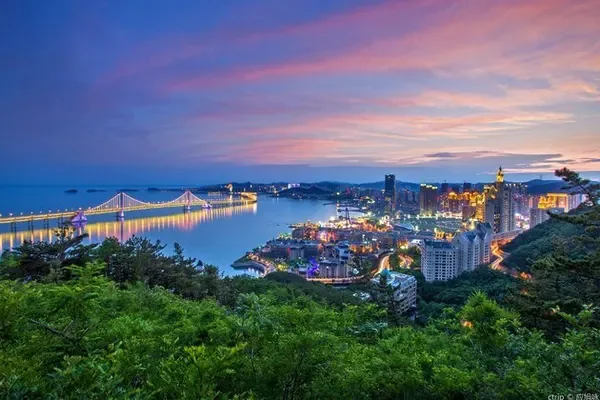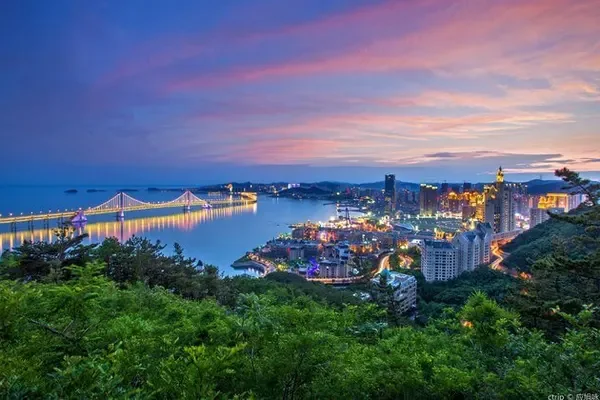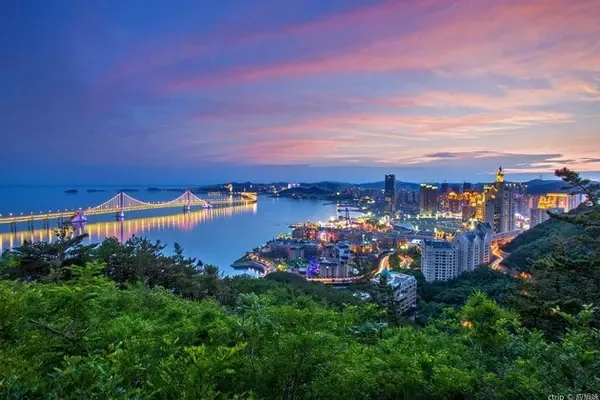Send out the seal of the mound, touch the golden talisman, move mountains and mountains to find the dragon formula;
People light candles, ghosts blow lamps, and surveyors look for stars;
ghost blowing lamp book fans
Do you still remember the Longling maze where there were fates to enter and no fates to exit?
Now, it's finally moving from text to screen!
Conscience of the Crew of "Ghost Blowing the Lantern: Longling Misty Cave"
Acting skills of Pan Yueming, Zhang Yuqi and other leading actors are online
Coupled with the twists and turns, the thrilling plot
Let it become the dark horse with the highest rating in the Ghost Blowing Lantern series
The Iron Triangle of Adventure once again ignited the passion of many audiences for treasure hunting and exploration
Reluctantly, three episodes are updated every week, and one episode is set for half an hour
Let many people cry out that they can't see enough
What moved me the most was not the plot, but the location of the scene
"Western Xia Black Water City" appeared in the play
Thrilling and Thrilling
Push the plot to a climax
This visually stunning place is nowhere else
It was filmed at the Xixia Mausoleum and Shuangling Mausoleum
not much to say
Let us feel the spirit of "Xixia Blackwater City" in the play
Isn't it wonderful?
Xixia Mausoleum is undoubtedly a mysterious place
Now with the popularity of "Ghost Blowing Lantern: Longling Miku"
The Shuangling Tombs of Xixia Mausoleum, the main location for filming, has also become a hot word on the Internet
Today we follow in the footsteps of the protagonist in the play
Walk into Xixia Mausoleum National Archaeological Site Park to explore the secrets~
Heishui City and Xixia Mausoleum
The ruins of Hei (Water) City are located in the Gobi Desert about 25 kilometers southeast of Dalaihubu Town. It was first built in the Xixia period, when the Xixia Dynasty set up the "Heishui Town Yanjun Division" here. In 1286 A.D., Kublai Khan, the ancestor of the Yuan Dynasty, expanded the city and set up "Yijinai Road General Manager's Mansion". Heicheng is 470 meters long from east to west and 384 meters wide from north to south, with a total area of 180,500 square meters. Although it has gone through more than 700 years, the Heicheng still retains its grandeur and grandeur. It is the most complete preserved ancient city site north of the "Ancient Silk Road". A large number of cultural relics have been unearthed here, among which the "Pear in the Palm of the Pan-Han Heshi", the painted double-headed Buddha and the banknotes of the Yuan Dynasty in the Western Xia Dynasty are unparalleled in the world. In 2001, it was listed as a national key cultural relic protection unit and included in the Juyan Site Protection Area.
The Xixia Mausoleum is the imperial mausoleum of the Xixia Dynasty (1038-1227), located at the eastern foot of Helan Mountain. The mausoleum area is large and spectacular. Within a radius of 58 square kilometers, there are 9 imperial mausoleums and 271 burial tombs along the mountain; the mausoleum is mainly built with northern loess ramming technology, and its architectural shape is influenced by Tang and Song Dynasties It is the largest, highest-level, and most complete architectural relic preserved in Xixia history. It has witnessed the existence of the Xixia Dynasty and the hereditary monarchy, and provided a special witness for this ancient civilization that has disappeared. .
dust master
Beyond Helan Mountain, with your head resting on the green hills and your feet stepping on the jade belt, there is a treasure land of geomantic omen. The tombs of the Xixia nobles have absorbed the length of the tombs of the Qin, Han, Li and Tang dynasties. The scale is magnificent and the layout is strict. In addition, the Xixia people believe in Buddhism and are deeply influenced by Buddhism. At the same time, they have the national characteristics of the party members, so the structure of the tomb is unique. , it is difficult for future generations to see its mystery.
Longling Miku - Xixia Mausoleum Site Area
"The ancient mounds at the bottom of Helan Mountain are thick, and the heights are like floating water"
The head rests on the green hills, the feet step on the jade belt, the scale is magnificent, and the layout is strict
The towering rammed-earth mausoleum towers stand for thousands of years
It has become the treasure land of geomantic omen in Master Chen's mouth
This is the filming location of "Longling Miku" in the play
In the Xixia Mausoleum Ruins Area
Visit the No.1 Tomb, No.2 Tomb, No.5 Tomb,
Mausoleum No. 6 and Large Burial Tombs
The whole line overlooks the magnificent ruins of Xixia Mausoleum
Strolling through the ruins of the No. 3 cemetery
Overlooking the majestic Helan Mountains
A close look at the tall and majestic Mausoleum Pagoda
Mountains facing each other, the scenery is infinite
The vicissitudes of history are close at hand
Xixia Royal Mausoleum, also known as Xixia Emperor Mausoleum and Xixia Imperial Mausoleum, is the tomb of emperors and royal tombs of Xixia Dynasty. The Royal Mausoleum is located in the west of Yinchuan City, Ningxia, with Helan Mountain in the west and Yinchuan Plain in the east. It is between 1130 meters and 1200 meters above sea level. It is one of the largest and most complete imperial cemeteries in China and the largest existing Xixia cultural relics.
The tombs of the Western Xia Dynasty were built from the beginning of the 11th century to the beginning of the 13th century. Influenced by Buddhist architecture, the Western Xia royal mausoleum organically combines Han culture, Buddhist culture, and Dangxiang culture, forming a unique form of Chinese cemetery architecture. Among the 119 national key scenic spots in China, the Xixia Mausoleum is the only scenic spot composed of a single emperor's tomb. It inherits the history of the Tuoba clan of Xianbei from Pingcheng in the Northern Wei Dynasty to Dangxiang Xixia.
The scenic spot covers an area of more than 58 square kilometers, and the core scenic spot is 20.9 square kilometers. There are 9 emperor tombs and 271 tombs of princes and relatives. The scale is magnificent and the layout is strict. Each imperial mausoleum is an independent building group in a vertical rectangle facing north and south, and its scale is comparable to that of the Ming Tombs. Absorbed since the Qin and Han Dynasties, the director of the Tang and Song imperial tombs, and influenced by Buddhist architecture, it constitutes a unique form of Chinese cemetery architecture.
Xixia Mausoleum is magnificent in scale and neat in layout. Each imperial mausoleum is an independent and complete building group, facing south, in a vertical rectangle, and its scale is comparable to that of the Ming Tombs. There are two scenic spots available for visiting: "Tomb of King Hao" and "Shuangling".
According to literature records, there are gates, stele pavilions, moon city and palace city distributed from south to north in the former royal tombs. In the palace city, there are buildings such as dedicated mausoleums and tower-shaped mausoleums. The mausoleum platform is built of rammed earth, with seven floors of octagonal, which are retracted layer by layer. shape. But now there are only rammed earth mausoleums, ruined walls and a piece of rubble.
The Xixia Dynasty was established by the Dangxiang clan from the 11th to the 13th century to govern the western part of my country. From the founding of Yuan Hao, a total of 10 emperors were handed down, which lasted 190 years until it was destroyed by Mongolia in 1227. The 9 royal tombs of Xixia are Taizu Li Jiqian Yuling Tomb, Taizong Li Deming Jialing Tomb, Jingzong Li Yuanhao Tailing Tomb, Yizong Li Liangzuo Anling Tomb, Huizong Li Bingchang Xianling Tomb, Chongzong Li Qianshun Xianling Tomb, Renzong Li Renxiao Shouling Tomb, Huanzong Li Chunyou Zhuang Mausoleum and Xiangzong Li An An Kang Mausoleum. Xixia has a total of 10 emperors from Jingdi Li Yuanhao proclaiming emperor to the last emperor Li Yan's death. If adding Jingdi's grandfather Li Jiqian and father Li Deming, there are a total of 12 emperors. There are only 9 royal tombs in Xixia, and the emperors of the last three generations failed to build mausoleums because they died during the period when Genghis Khan destroyed Xixia. The cemetery is divided into three areas: the southern area, the central area and the northern area, among which Yuling and Jialing in the southern area are the largest, commonly known as "Shuangling".
To visit Ningxia, you can choose the local professional tourist transportation Ningxia Tourist Scenic Spot Through Train. The staff all wear yellow vests, and the little yellow people are hospitable. There are two tourist distribution centers in the new city railway station and the crescent moon in the old city. The square is convenient for accommodation nearby, there are many hotels, and the transportation is convenient. It is not far from the civil aviation bus, and it is very convenient whether it is by train or plane. The through train of the scenic spot has opened the line from the urban area to the scenic spots around Yinchuan, such as Shahu, Huangsha Ancient Ferry, Shuidonggou, Zhenbeibao Western Film and Television City, Xixia Royal Tomb, Helan Mountain Rock Painting, Shapotou, etc., which is very convenient.



